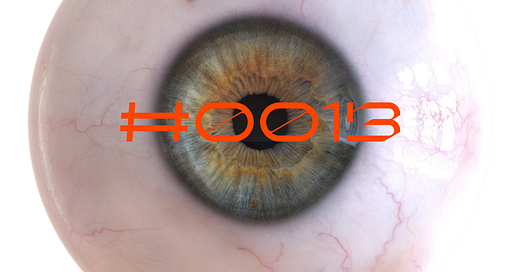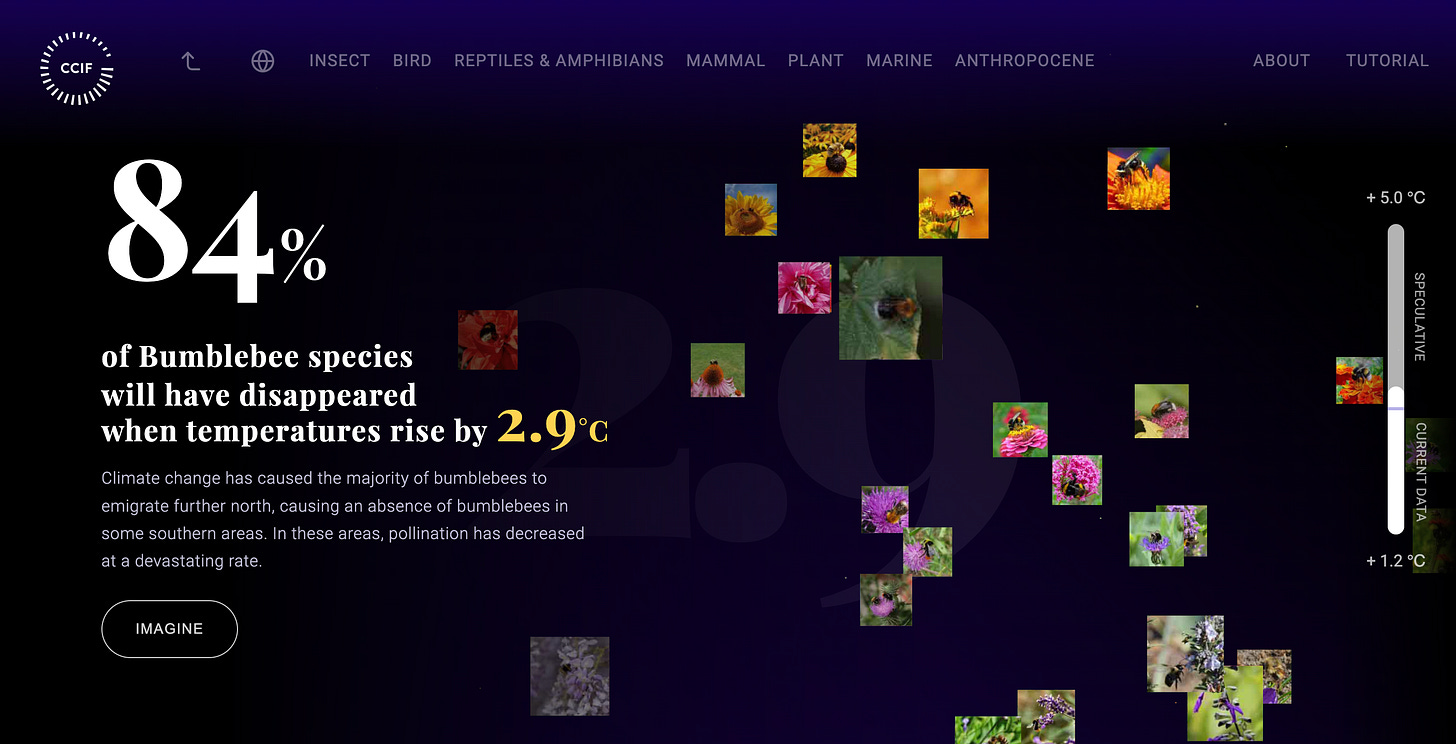The Images We’ll Loose
EYES ON: Sey Min’s Climate Change Impact Filter
Sey Min’s piece Climate Change Impact Filter, created as part of Google Art and Culture’s Heartbeat of the Earth collection, uses data visualisation to help us grasp the immense loss that will come with the warming of our planet.
To visualise this tragedy, the project presents a huge data set of images of our planet’s biodiversity. The images swarm together in 3D space, as alive as the life they depict.
On the sidebar, we are confronted with a thermometer marked with the earth’s rising temperature. As you increase the temperature, the images of life, filtered into species, disappear.
WHY WE’RE WATCHING:
As Sey Min writes, “awareness of the problem does not always mean understanding the impact.”
In this project, as we experience the diversity of images dwindling, there is an overwhelming sense of loss — both visual and visceral — and the impact is felt. This sense of loss, as Sey Min explains in her project breakdown, is directly created by us. It’s all our doing, in reality and in this simulation. In designing an interactive temperature slider, that you are required to adjust in order to move through the experience, the effects of our actions are clearly laid out and undeniable.
Fanatic Fashion


EYES ON: Elvis wearables
When Elvis’ iconic jumpsuits were sold under the brand “The Elvis Legacy Council” as digital NFT wearables, a whole new level of kitsch was brought to the world of digital wearables and legacy IP.
“A one-time investment for a lifetime of Elvis” — the setup included much more than just wearables, throwing in “unique metaverse experiences, exclusive in-person Graceland tours, Memphis experiences, and many more!”
The idea behind the collection is that Elvis-items — from the Jailhouse Rock outfit (1957), to the American Eagle jumpsuit (1973) — are often trapped in private collections, out of reach from their fans. These digital wearables bring Elvis to the people.
WHY WE’RE WATCHING:
In immortalising Elvis’ clothes as digital collectibles, and proliferating the image of his iconic costumes, something interesting arises; it’s as if we are faced with double the kitsch: the memorabilia of memorabilia.
With details placed “accurately” on each digital garment to the exact rhinestone, the deep admiration of Elvis’ fans — the mania — is transferred into the clothes. They are complex digital objects: symbols through and through, a love for Elvis is both expressed and possessed in the digital jumpsuits.
An Alternate World
EYES ON: Lawrence Lek’s Unreal Estate
The simulation artist Lawrence Lek created Unreal Estate as the 9th chapter of Bonus Levels, a series of simulated scenarios in which alternate realities are explored. Borrowing from the video game concept of a “bonus level”, where rules are suspended, each architectural virtual space (or so-called chapter) weaves in existential science fiction to reveal some truth about our reality.
Set in London’s Royal Academy of Arts, Unreal Estate’s “what if” scenario imagines a world in which the academy building was sold to a Chinese oligarch and recreated on a private island.
WHY WE’RE WATCHING:
With a voiceover that follows the directions of a Russian oligarch’s daughter instructing others on how to run an efficient household, we understand this building within the architecture of wealth.
Teeming with art, The Royal Academy in this new context is no longer a historic site for Art education. It has been bought. With a Jeff Koons bunny proudly placed in the courtyard, each piece of art is no more than a reflection of wealth.
Framing "simulation as institutional critique", Lek’s work reflects on London’s housing crisis and its exacerbation by the inflow of international wealth. By singling out The Royal Academy in this chapter (a building with a precarious rental contract), a possible dystopian fate — where wealth trumps culture, or even is culture — is examined.








